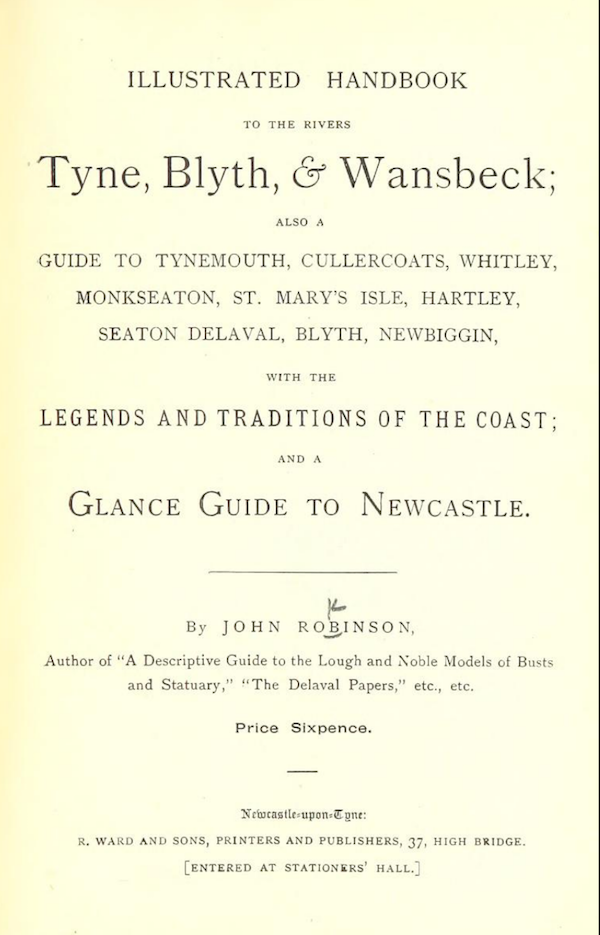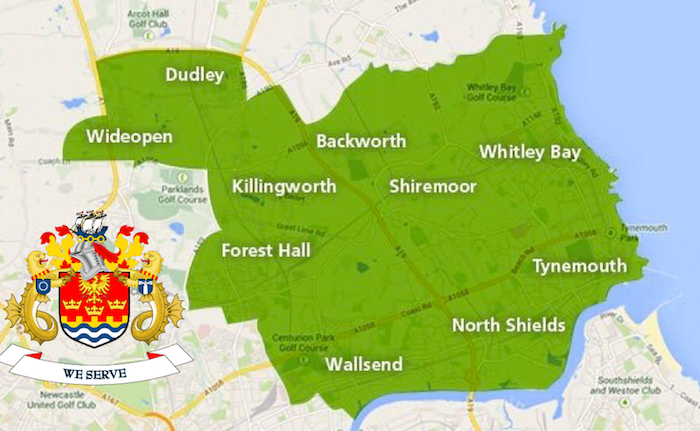Topics > Tyne and Wear > North Tyneside > Tynemouth > Tynemouth - Historical Account
Tynemouth - Historical Account
Extract from: JOHN ROBINSON (1894), ILLUSTRATED HANDBOOK TO THE RIVERS Tyne ,Blyth,& Wansbeck; ALSO A GUIDE TO TYNEMOUTH, CULLERCOATS, WHITLEY, MONKSEATON, ST. MARY'S ISLE, HARTLEY, SEATON DELAVAL, BLYTH, NEWBIGGIN, WITH THE LEGENDS AND TRADITIONS OF THE COAST; AND A Glance Guide to Newcastle.
TYNEMOUTH
"Oh! the cliffs of old Tynemouth they're wild and they're sweet,
And dear are the waters that roll at their feet.
The old ruined Abbey it near shall depart,
'Tis the star of my fancy, the home of my heart."
VlSITORS from the South of England, or our Scotch neighbours when they cross the borders to " Merry England," are wishful to look upon " Tynemouth Priory and Bay." Its fame as a delightful watering place; its famous Abbey and beautiful bay; its gigantic piers and breakwaters and promenade; and its romantic associations, all combine to make it the favourite seaside resort on the northeast coast. All who delight in natural beauty, historic landmarks, and works of great engineering skill, will find abundant material to gratify their tastes in this charming watering- place. The mouth of the Tyne is the dividing line between Northumberland and Durham; and to the most unskilled in geological science, a glance at the coast line on the north and south of the river will show a remarkable change in the natural formation of the rocks. On the north side we have the hard sandstone; while on the south is seen the soft chalk cliffs. The first object of interest in Tynemouth to visitors is its beautiful ruined Abbey; these weather-beaten walls are a prominent landmark from the sea, are picturesque as seen on the coastline, and when looked upon from the castle yard strike the imagination of all beholders with a sense of solemn grandeur. For hundreds of years the towering walls of this noble pile have withstood the storms and fury of the gales, which have dashed numberless ships and hundreds of human lives at its feet; yet it stands to day chaste in its delicate tracery and beautiful in its ruins.
All that now remains of the Priory Church of the Blessed Virgin and St. Oswin, king and martyr, is the shell of the religious house our Saxon and Norman forefathers loved to worship in. These ruins carry the mind back to times—
"When Rome, the Empress of the world,
Of yore her eagle wings unfurled."
For in making some alterations near the Castle, in the early part of the present century, there was dug up, among other things, an altar, dedicated to Jupiter, from which it would appear that previous to the establishment of a Christian place of worship, there had been a heathen temple, erected by the Romans. The earliest mention of a Church at Tynemouth was one built of wood by King Edwin in 626 ;was rebuilt by St. Oswald, and destroyed by the Danes in one of their numerous and destructive invasions. In the years 788, 794, and 800 the Church was again the object of the invaders' destructive nature; while in 865 the fury of the Danes culminated in the Church and all its buildings being destroyed by fire, and the Nuns from St. Hildas' massacred by the Scandinavians, under Halfden, the Danish King. The re-building of the Church and its repeated destruction went on until the year 1008, when the Church was again destroyed by the Danes.
Preface < Robinson, 1894 > Tynemouth Castle

from http://access.bl.uk/item/pdf/…
JOHN ROBINSON (1894), ILLUSTRATED HANDBOOK TO THE RIVERS Tyne , Blyth, & Wansbeck etc.
- JOHN ROBINSON (1894), ILLUSTRATED HANDBOOK TO THE RIVERS Tyne ,Blyth,& Wansbeck; ALSO A GUIDE TO TYNEMOUTH, CULLERCOATS, WHITLEY, MONKSEATON, ST. MARY'S ISLE, HARTLEY, SEATON DELAVAL, BLYTH, NEWBIGGIN, WITH THE LEGENDS …
Added by
Simon Cotterill


from http://access.bl.uk/item/pdf/…
JOHN ROBINSON (1894), ILLUSTRATED HANDBOOK TO THE RIVERS Tyne , Blyth, & Wansbeck etc.
- JOHN ROBINSON (1894), ILLUSTRATED HANDBOOK TO THE RIVERS Tyne ,Blyth,& Wansbeck; ALSO A GUIDE TO TYNEMOUTH, CULLERCOATS, WHITLEY, MONKSEATON, ST. MARY'S ISLE, HARTLEY, SEATON DELAVAL, BLYTH, NEWBIGGIN, WITH THE LEGENDS …
Added by
Simon Cotterill







